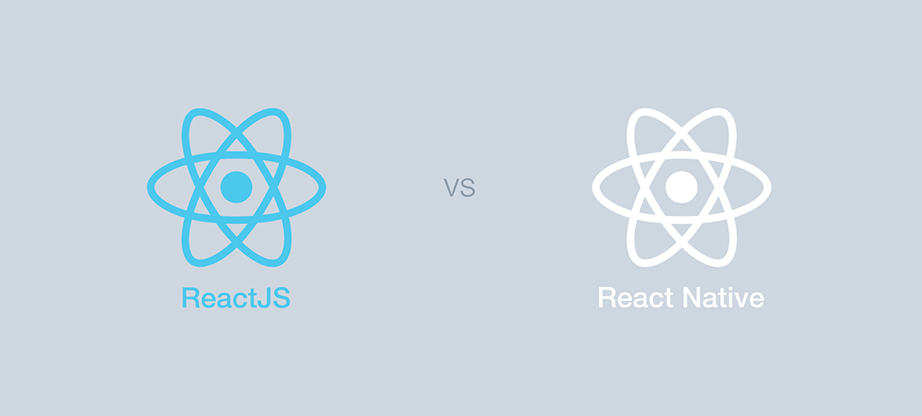React Native vs React JS: What Are the Main Differences?
All the differences between ReactJS and React Native derive from one major distinctness – the field of appliance for both tools.

React.js is a JavaScript library for constructing a high performing UI layers for web applications and websites.
React Native is a comprehensive framework meant for building native, cross-platform mobile apps for Android and iOS.
However, it’s important to keep in mind that React Native derived from ReactJS. Which means, they share the same core, same basic syntax and same approach towards development process.
Basically, it is still React code, but the framework possibilities offer additional functionality to run your app on mobile platforms. And, one more great bonus – if you know React, you practically know React Native. Which is an astonishingly useful feature in React development, and any kind of application development at all?

React.js
In a nutshell, ReactJS is responsible for building a hierarchy (rendering) of UI components while working with both frontend and server-side. Its distinguishable features are:
Easy to learn. It is quite readable even for those who aren’t familiar with React at all. Unlike to other frameworks which require you from your learning of a huge list of concepts which are only useful within the framework. Even easier to work with. You can reuse code components in React JS. Needless to say, that saves you a lot of time.
React’s virtual DOM refreshes only parts of the page. This is the central and most beloved feature in ReactJS. It dramatically increases the performance of application and development speed. Thanks to its Web Inspector, ReactJS also improves the debugging speed drastically. Which, of course, improves development speed even further, by making your life easier. The way how ReactJS renders your pages completely, from the server to the browser greatly improves the SEO of your web application.
As a great additional bonus, you get all the advancements in Java language and its ecosystem. As we said, if you’re familiar with ReactJS, it won’t be a problem for you to pick up React Native. If you’re not – it is better to start with ReactJS. It is way easier than React Native, as it has much fewer components to learn. Building one or two medium sized apps with ReactJS will help you a lot in your progress with React Native. Speaking of which…
React Native
This one allows you to build mobile apps using only JavaScript. It utilizes the same design as ReactJS. And that not only helps you jump straightforward from ReactJS into React Native but also lets you compose mobile UI from declarative components. Here are some distinctive features of React Native: You’ll have to forget about HTML and CSS in React Native. However, there are alternate ways to mimic those.
Native components replace tags. You just need to write your styles in JavaScript files. For example, ‘text’ replaces ‘p’, and ‘background-color’ becomes ‘backgroundColor’. With React Native you’re able to build a mobile app pretty much indistinguishable from an app built natively using Objective-C/Swift or Java. React Native utilizes the same fundamental UI building blocks as regular iOS and Android apps. All you have to do is use JavaScript and React to put those building blocks together. Since there is no CSS in React Native, CSS animations aren’t available as well. However, you can use React Native’s Animated API for animations. Instead of recompiling the whole app, you can reload it instantly with hot reloading feature. It is even possible to run new code while retaining your application state. You can simply drop down to native code if you need to optimize some aspects of your application.
React Native lets you build part of your app in React Native, and part – using the native code directly. Unlike routing to different web pages in web development, you have to navigate between different scenes of your app in React Native. For that purpose, you’ll have to use Navigator (or Navigator IOS for iOS) component provided by React Native.
Final Words
So yes, these two are fundamentally same. All that differs them is what are they used for. React Native derived from ReactJS as a specific tool for building mobile applications. As a consequence, it had to be adapted. The absence of HTML and CSS are the necessary sacrifice. However, your experience in writing a web application on ReactJS is more than valid. And once you become proficient with both – web development and mobile app development are open to you.

